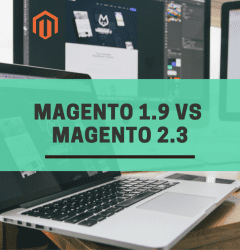This website uses cookies so that we can provide you with the best user experience possible. Cookie information is stored in your browser and performs functions such as recognising you when you return to our website and helping our team to understand which sections of the website you find most interesting and useful.
21 Oct

Why is Headless Commerce the Future of Retail?
According to 52% of digital agencies and 46% of merchants who participated in the 2021 Global Headless Report, Headless is the number one trend in the world of retail, and its importance is only going to increase with time. The need for customers to explore their preferred brands across multiple channels is igniting the growth of investments in eCommerce platforms. Brands across the globe are executing strategies and solutions that stand out amid the intensifying competition in the retail space to keep customer attention intact.
One such solution is Headless Commerce. This approach is getting increasingly popular because of its flexibility and almost endless possibilities for providing a seamless experience to customers.
In this week’s blog, we are going to discuss why headless commerce is going to be the number one thing in retail in the near future:
1. Omnichannel is rising: Continuous digitalization is nurturing a shift in customer behavior. They are consuming more content from various places. Data shows that almost 74% of customers use multiple channels to initiate and complete transactions. Moreover, over 76% buyers choose different eCommerce channels, depending on the context. Hence, the need for brands to adopt an omnichannel strategy has become significant. Every device and touchpoint needs a similar visual and flow to keep the users engaged throughout the purchase journey. And that’s where headless architecture proves to be helpful.
With headless commerce, we can create similar interactions at different touchpoints with the same backend and give customers the same seamless experience, whether it is Website, Mobile Web, Mobile App, POS, Kiosk, etc. If customers navigate from one channel to another, they will be able to have the same experience and feel everywhere.
2. Increased online shopping: In 2021, retail eCommerce sales amounted to approximately 5.2 trillion U.S. dollars worldwide. This figure is forecast to grow by 56 percent over the next few years, reaching about 8.1 trillion dollars by 2026. Consumers want to keep buying online. The eCommerce industry has been growing fiercely every year, with retail sales made from all sorts of devices going up each year. With more and more shoppers shopping online, it has become important for brands to provide a seamless purchasing experience.
With headless architecture, providing a seamless shopping experience is much easier than the monolithic systems. From faster speed, and more flexibility to increased personalization, you can effectively transform your online stores by switching to a headless solution.
3. Mobile commerce would be on rise: Mobile commerce keeps growing. In 2021, $3.56 Trillion in retail eCommerce sales were made from mobile users (Statista). With the increasing popularity of mobile phones as a purchase medium, brands need to constantly optimize their mobile experiences to increase their online sales.
With headless commerce, you can achieve this quickly and easily as compared to traditional monolithic architecture. It helps you make your website accessible via different devices such as mobile phones, tablets, etc. The purchase journey through mobile becomes quite engaging and seamless via the help of headless solutions.
4. Need for enhanced personalization: With the increase in competition and ever-changing customer needs, 91% of consumers say they are more likely to shop with brands that provide offers and recommendations that are relevant to them. Moreover, 80% of consumers want their favorite brands to deliver personalized experiences, and provide exceptional customer service. This includes features like customized shopping preferences, recommendations, and promotions that are personalized for the customer based on their previous purchasing history. With headless architecture, you have the option of tuning the front end of the website to match the taste of the customer. This allows you to create a stronger and more special bond between you and your customers.
5. Complex needs and requirements: The buyer journey has become increasingly complex and brands need to provide a simplified user flow to them. The navigation throughout the entire website needs to be frictionless and intuitive. Even if users switch from laptop to mobile, they need to have the same look and feel on both devices.
Headless commerce detaches the presentation layer (front-end), from the commerce functionality and background process layer (back-end). Due to this, the front end can be served faster and in a more simplified manner, which enhances the website’s performance significantly. It also makes the platform scalable as the traffic increases, we can scale the front end to handle the traffic without much increasing the backend.
In 2021, e-commerce accounted for nearly 20 percent of retail sales worldwide. Forecasts indicate that by 2025, the online segment will make up close to a quarter of total global retail sales. With this increase, it has become important for brands to offer a tailored, smooth, and customized experience that suits customers’ personal tastes and needs. In the retail world, where the vast majority of companies are focused on improving page speed, enhance personalization, provide a seamless experience, companies that don’t prioritize creating a tailored experience run the risk of getting left behind.
Headless commerce is a step towards adopting a future-proof strategy, as it enables retailers to give their customers a seamless experience unbothered by the restraints of channels. No matter what device your customer is using, with headless, you will be able to give them a seamless experience everywhere.
Related Post
Industries Served
United States
India













